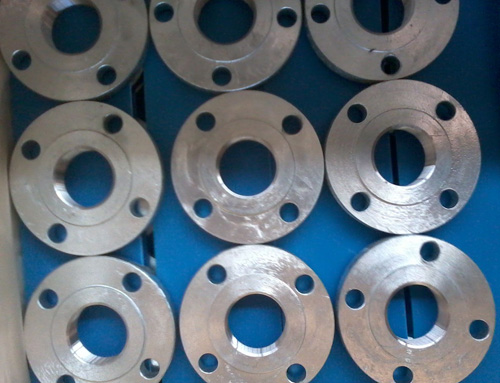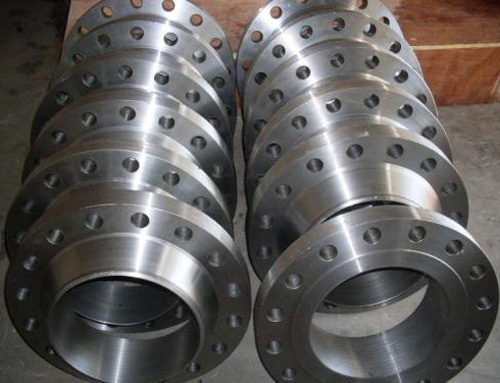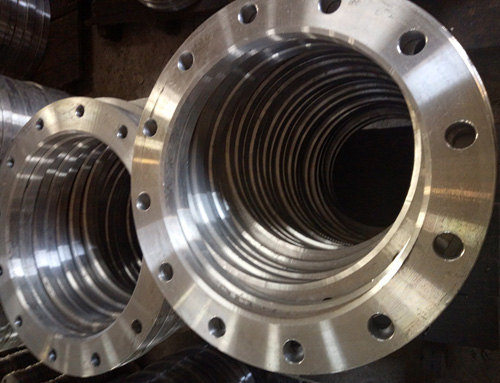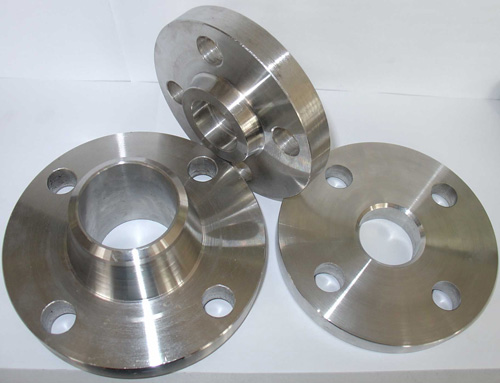Pipe flanges standards
Pipe flanges
There are many different flange standards to be found worldwide. To allow easy functionality and inter-changeability, these are designed to have standardised dimensions. Common world standards include ASA/ANSI/ASME (USA), PN/DIN (European), BS10 (British/Australian), and JIS/KS (Japanese/Korean).
In most cases these are not interchangeable (e.g. an ANSI/ASME flange will not mate against a JIS flange). Further, many of the flanges in each standard are divided into "pressure classes", allowing flanges to be capable of taking different pressure ratings. Again these are not generally interchangeable (e.g. an ANSI/ASME 150 will not mate with an ANSI/ASME 300).
These pressure classes also have differing pressure and temperature ratings for different materials. Unique pressure classes for piping can also be developed for a process plant or power generating station; these may be specific to the corporation, engineering procurement and construction (EPC) contractor, or the process plant owner. The ANSI/ASME pressure classes for Flat-Face flanges are 125# and 250#. The classes for Ring-Joint, Tongue & Groove, and Raised-Face flanges are 150#, 300#, (400# - unusual), 600#, 900#, 1500#, and 2500#.
The flange faces are also made to standardized dimensions and are typically "flat face", "raised face", "tongue and groove", or "ring joint" styles, although other obscure styles are possible.
Flange designs are available as "weld neck", "slip-on", "lap joint", "socket weld", "threaded", and also "blind".
ASME standards (U.S.)
ASME type flange on a gas pipeline
Pipe flanges that are made to standards called out by ASME B16.5 or ASME B16.47 are typically made from forged materials and have machined surfaces. B16.5 refers to nominal pipe sizes (NPS) from ½" to 24". B16.47 covers NPSs from 26" to 60". Each specification further delineates flanges into pressure classes: 150, 300, 400, 600, 900, 1500 and 2500 for B16.5, and B16.47 delineates its flanges into pressure classes 75, 150, 300, 400, 600, 900. However these classes do not correspond to maximum pressures in psi. Instead, the maximum pressure depends on the material of the flange and the temperature. For example, the maximum pressure for a Class 150 flange is 285 psi, and for a Class 300 Flange it is 740 psi (both are for ASTM A105 Carbon Steel and temperatures below 100F).
The gasket type and bolt type are generally specified by the standard(s); however, sometimes the standards refer to the ASME Boiler and Pressure Vessel Code (B&PVC) for details (see ASME Code Section VIII Division 1 - Appendix 2). These flanges are recognized by ASME Pipe Codes such as ASME B31.1 Power Piping, and ASME B31.3 Process Piping.
Materials for flanges are usually under ASME designation: SA-105 (Specification for Carbon Steel Forgings for Piping Applications), SA-266 (Specification for Carbon Steel Forgings for Pressure Vessel Components), or SA-182 (Specification for Forged or Rolled Alloy-Steel Pipe Flanges, Forged Fittings, and Valves and Parts for High-Temperature Service). In addition, there are many "industry standard" flanges that in some circumstance may be used on ASME work.
The product range includes SORF,SOFF, BLRF, BLFF, WNRF (XS, XXS, STD & Schedule 20, 40, 80), WNFF (XS, XXS, STD & Schedule 20, 40, 80), SWRF (XS & STD), SWFF (XS & STD), Threaded RF, Threaded FF & LJ, with sizes from 1/2" to 16".









